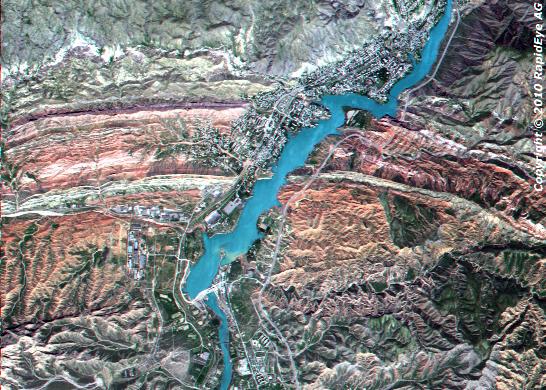Use of RapidEye satellite data for assessment of glacier and vegetation dynamics
The CAWa research group will use RapidEye satellite data to assess the dynamics of glaciers and vegetation cover in Central Asia. The respective scientific proposal has been approved by RESA – Rapid Eye Science Archive in October 2009.
RapidEye earth observation satellites provide multi-spectral images with up to 15 daily revisits in a high spatial resolution of 6 m.
The CAWa Research group will use the RapidEye data for the following activities:
- Glacier monitoring, i.e. observation of spatial extension, flow velocity, melting conditions, debris cover glacier parts,
- Development of a fractional vegetation cover algorithm
The granted RapidEye satellite images will cover two of the CAWa study areas: the Naryn and the Ala Archa basins in Kyrgyzstan. A total of 14 images will be provided for autumn 2009 and summer 2010.
The satellite data and the developed processing techniques will be validated in three field campaigns to the study areas. In addition, the results from RapidEye will be cross-validated with results from other conventional satellites, e.g. Quickbird, IKONOS and MODIS.
The results will be used to improve the performance of the hydrological model set up within the CAWa project.
Moreover, the developed methods will contribute to a better understanding of the glacier dynamics and are expected to be the first step towards a satellite-based monitoring of glaciers in the high mountains of Central Asia.
Glaciers constitute a significant water reservoir in Central Asia providing around 20-30 % of river run-off, but will be affected severely by climate change during the next decades.
The CAWa research group working with RapidEye data unites researchers from the German Aerospace Center DLR, the University of Würzburg, GFZ German Research Centre for Geosciences, the University of Munich, the Glaciological Commission of the Bavarian Academy of Science, the Technical University of Dresden, and the Central Asian Institute for Applied Geosciences CAIAG.
Contact:
Dr. Doris Klein
Submitted by Katy Unger-Shayesteh on
